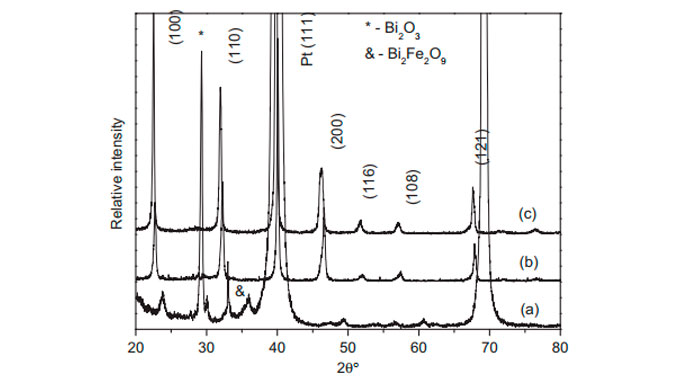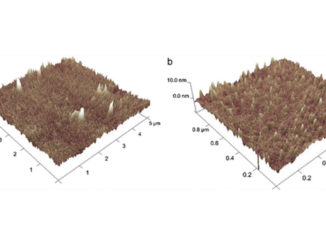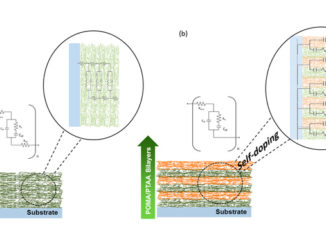
Writers: C.R. Foschini; M.A. Ramirez; S.R. Simões; J.A. Varela; E. Longo; A.Z. Simões
Keywords: A. Films; B. Interfaces; C. Dielectric properties; C. Ferroelectric properties
Abstract: The multiferroic behavior with ion modification using rare-earth cations on crystal structures, along with the insulating properties of BiFeO3 (BFO) thin films was investigated using piezoresponse force microscopy. Rare-earth-substituted BFO films with chemical compositions of (Bi1.00−xRExFe1.00O3 (x=0; 0.15), RE=La and Nd were fabricated on Pt (111)/Ti/SiO2/Si substrates using a chemical solution deposition technique. A crystalline phase of tetragonal BFO was obtained by heat treatment in ambient atmosphere at 500 °C for 2 h. Ion modification using La3+ and Nd3+ cations lowered the leakage current density of the BFO films at room temperature from approximately 10−6 down to 10−8 A/cm2. The observed improved magnetism of the Nd3+ substituted BFO thin films can be related to the plate-like morphology in a nanometer scale. We observed that various types of domain behavior such as 71° and 180° domain switching, and pinned domain formation occurred. The maximum magnetoelectric coefficient in the longitudinal direction was close to 12 V/cm Oe.
DOI: 10.1016/j.ceramint.2012.08.083




